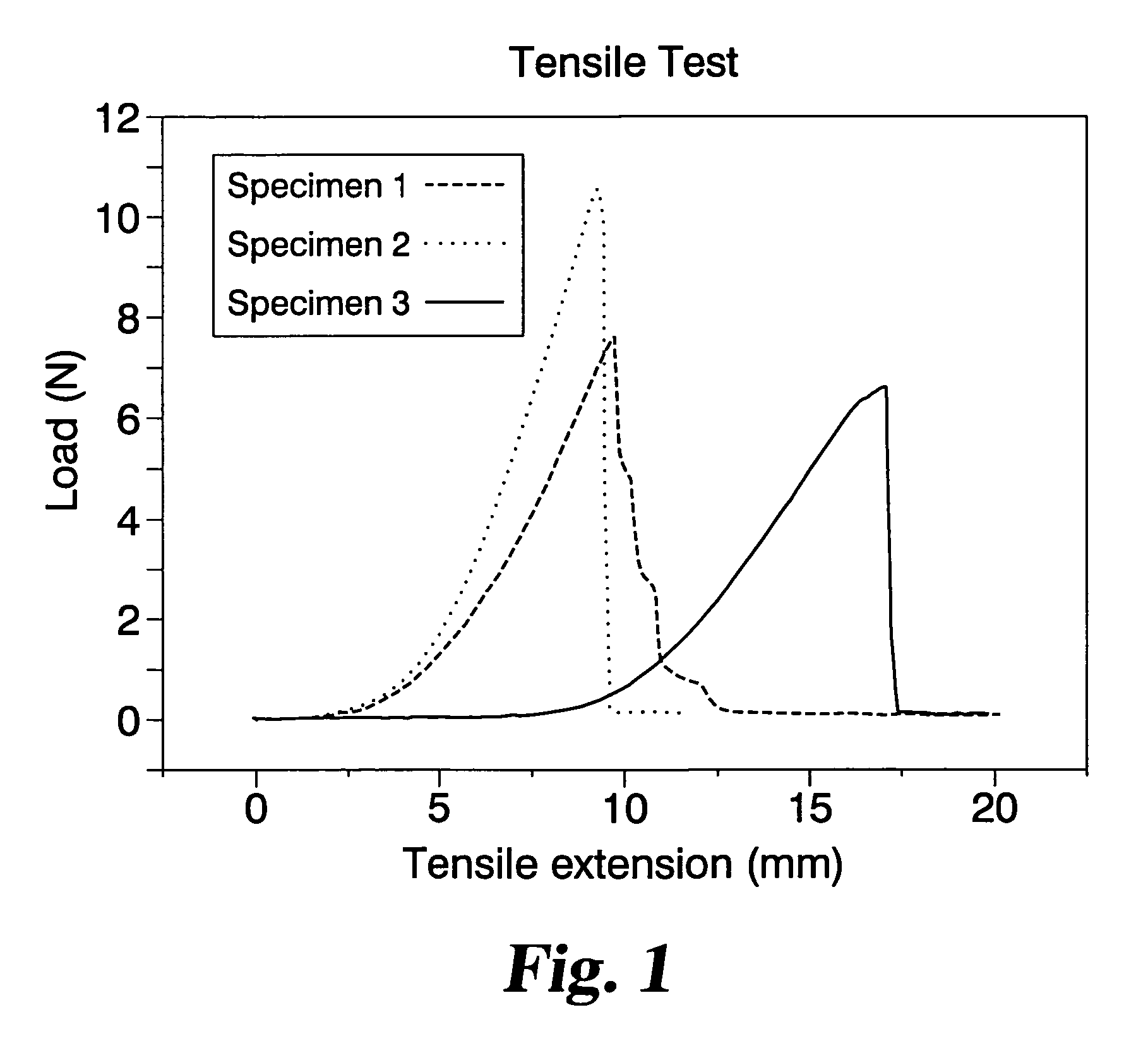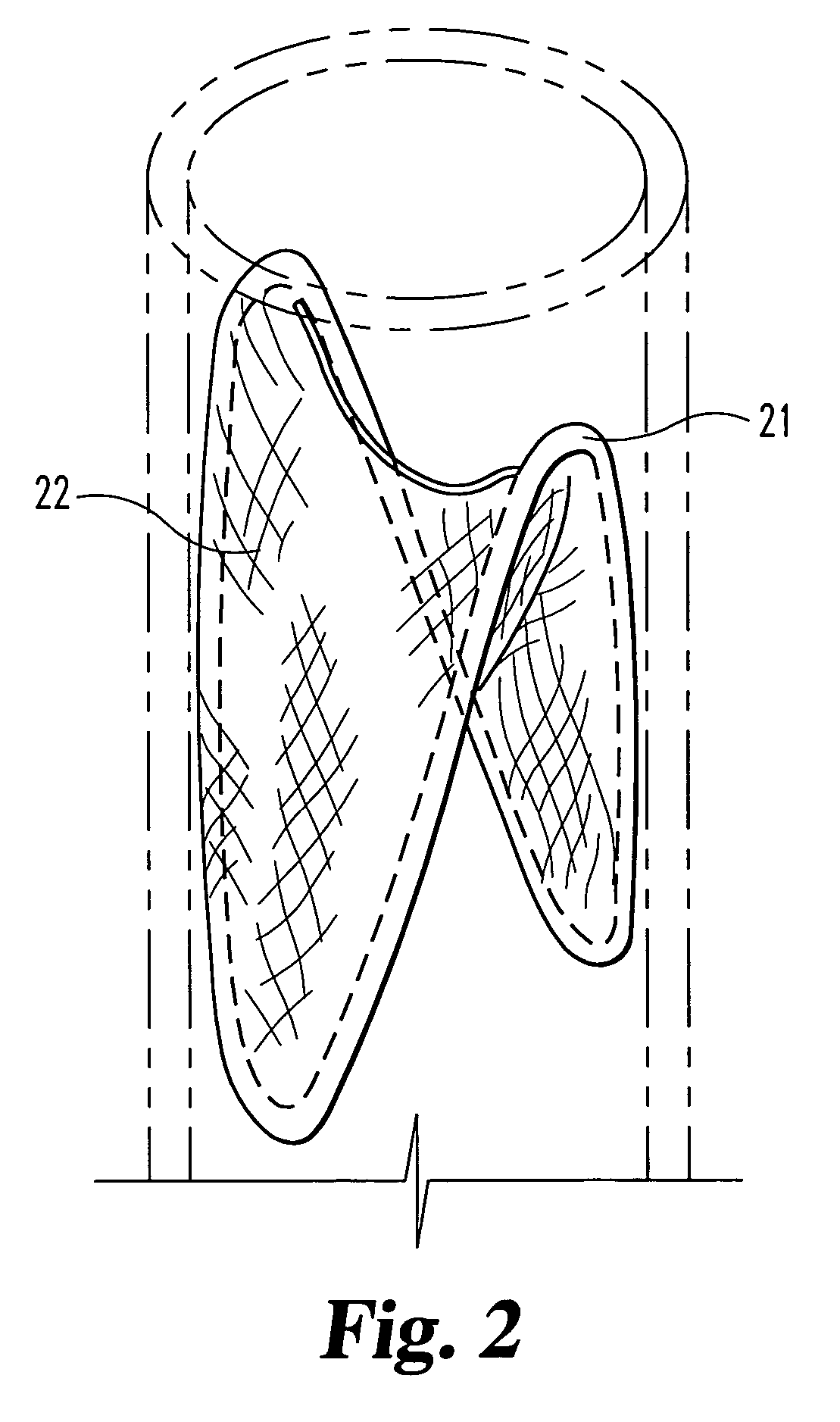Graft prosthesis devices containing renal capsule collagen
a technology of renal capsule and graft prosthesis, which is applied in the direction of prosthesis, biocide, antibody medical ingredients, etc., can solve the problems of complicated preparatory process and risk of disruption of the native structure of extracellular components
- Summary
- Abstract
- Description
- Claims
- Application Information
AI Technical Summary
Benefits of technology
Problems solved by technology
Method used
Image
Examples
example 1
[0074]The tissue graft material of this invention is prepared in accordance with the following steps:
[0075]Kidneys including the renal capsule of freshly slaughtered adult pigs are obtained and stored on ice prior to treatment at the laboratory. The capsule is fairly loose, but is attached to the kidney at discrete locations. The fatty tissue that is attached to the capsular tissue is first removed with a blunt dissecting instrument. A single slit is made in the capsule along the long axis of the kidney through the renal pelvis and the attachments between the kidney and the capsule are clipped and the capsule is peeled away from the kidney. Any remaining fatty tissues which are still attached to the capsules are carefully removed. The isolated capsule is semi-translucent.
[0076]The isolated capsule is rinsed several times with sterile water and then disinfected by submerging it in an aqueous ethanol peracetic acid solution for two hours and under vigorous agitation. The peracetic aci...
example 2
[0079]Samples of the purified tissue as prepared in Example 1 are stained using Gomori's Trichome stain. It is found that the material is primarily collagenous.
example 3
[0080]Samples of the purified tissue as prepared in Example 1 are stained using Verhoff's stain. Histological study reveals a presence of elastic fibers in the purified renal capsule tissue which is indicative of isolated renal capsule and separation from the surrounding mesenteric tissues.
PUM
 Login to View More
Login to View More Abstract
Description
Claims
Application Information
 Login to View More
Login to View More - R&D
- Intellectual Property
- Life Sciences
- Materials
- Tech Scout
- Unparalleled Data Quality
- Higher Quality Content
- 60% Fewer Hallucinations
Browse by: Latest US Patents, China's latest patents, Technical Efficacy Thesaurus, Application Domain, Technology Topic, Popular Technical Reports.
© 2025 PatSnap. All rights reserved.Legal|Privacy policy|Modern Slavery Act Transparency Statement|Sitemap|About US| Contact US: help@patsnap.com


